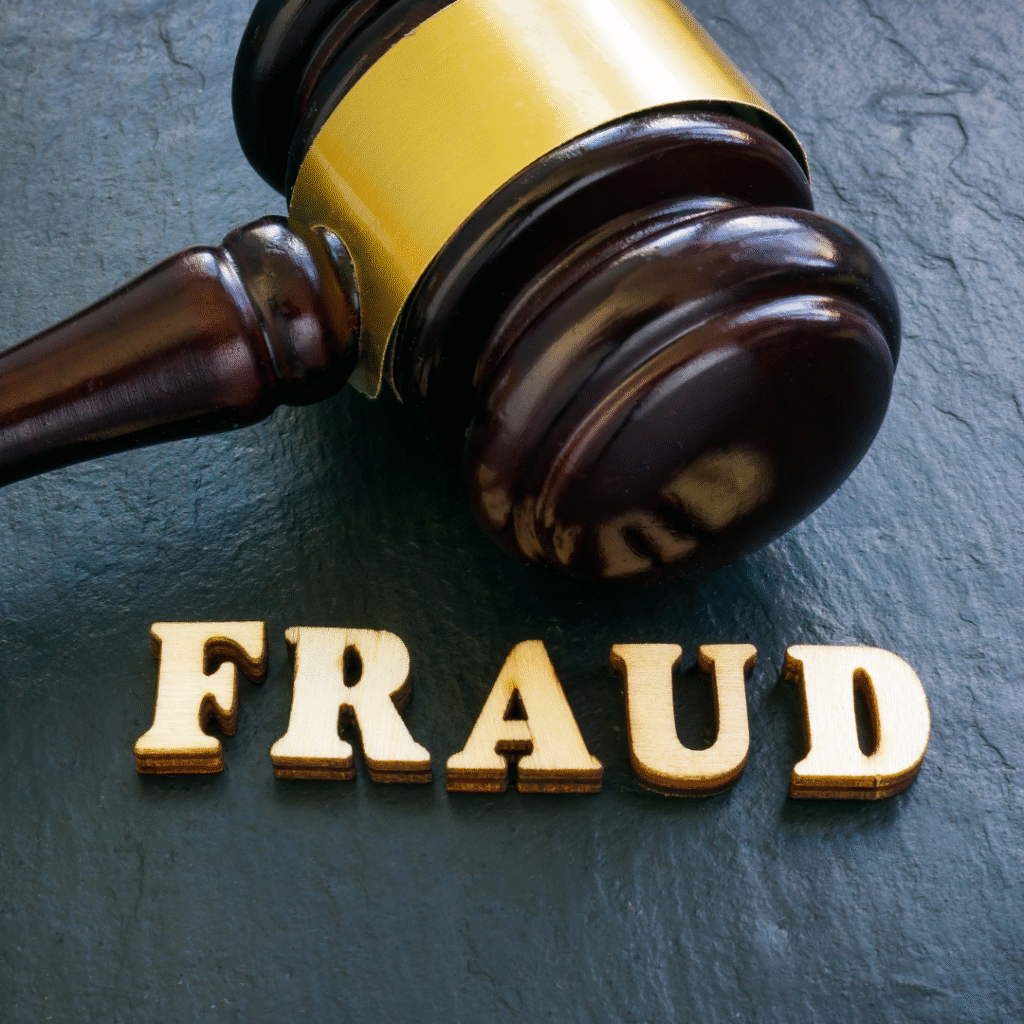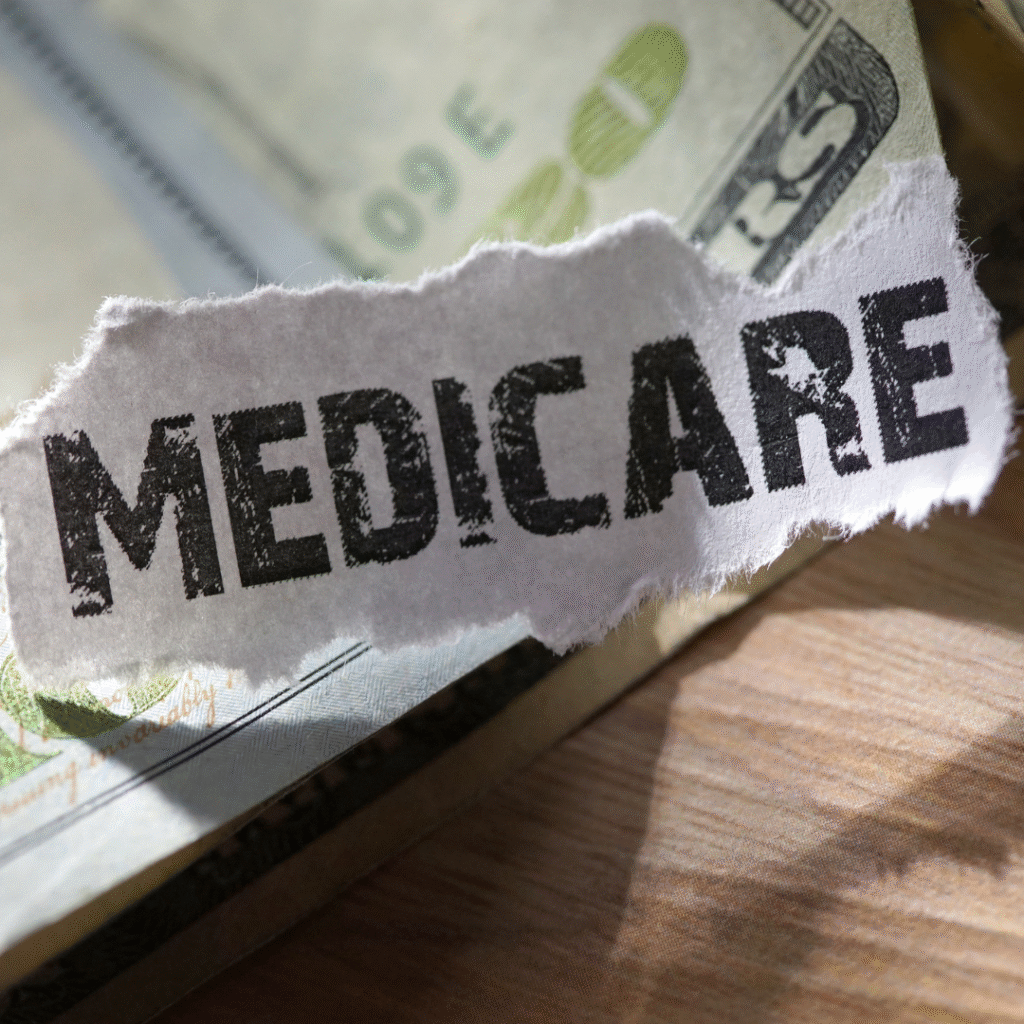Meta Privacy Verdict Raises Alarm Over Reproductive Health Data Risk

August 18, 2025 | JacobiJournal.com — A landmark Meta privacy verdict in California federal court has intensified scrutiny over how websites collect and share sensitive user information, sending a warning to companies that use online tracking tools. An eight-member jury found that Meta Platforms Inc., parent company of Facebook, unlawfully received sensitive reproductive health data from the popular Flo period-tracking app, violating the California Invasion of Privacy Act (CIPA). The decision marks a rare victory for plaintiffs in a wiretapping case involving modern web technologies. Jury Finds Meta Violated California Privacy Law The jury concluded that Meta intentionally recorded menstrual and sexual health information from Flo app users between November 2016 and February 2019. The plaintiffs — representing potentially millions of users — argued that Meta’s tracking technology exploited intimate data for targeted advertising without proper consent. CIPA, originally designed to prevent unauthorized telephone wiretapping, has increasingly been applied to digital tracking methods such as pixels, session replay software, and chatbots. The verdict underscores that sensitive health data receives heightened legal protection. Wider Implications for Website Operators Privacy attorneys say the ruling will embolden plaintiffs in similar lawsuits and force companies to reassess their data collection practices. Businesses that handle health-related information may now face greater risks if their privacy disclosures are insufficient. “This verdict shows courts are taking these issues seriously,” said Suzanne Bernstein of the Electronic Privacy Information Center (EPIC). “The injury occurs the moment information is shared without the user’s informed consent.” Following the U.S. Supreme Court’s Dobbs decision in 2022, concerns have grown over reproductive health data being accessed by law enforcement in states that restrict abortion, making the protection of such information even more urgent. Meta Pushes Back Against Verdict Meta has filed post-trial motions seeking to overturn the decision or decertify the class. The company argues it does not “record” user communications, instead providing code to advertisers who agree not to share sensitive information. Defense attorneys note that while the verdict is significant, its unique circumstances — a high-profile defendant, reproductive health data, and a jury trial — may not be easily replicated in other privacy disputes. If upheld, the ruling could lead to billions in damages, as CIPA allows for at least $5,000 per violation. Privacy Reform and Industry Response The Meta privacy verdict has sparked renewed calls for companies to limit data collection to only what is necessary and to shift from opt-out to opt-in consent models. Meanwhile, California legislators are considering Senate Bill 690, which could narrow CIPA liability for businesses by exempting certain “commercial business purpose” activities. However, privacy advocates warn that even if the bill passes, litigation will continue, and other states or the federal government may adopt stricter protections. Legal analysts note that the Meta privacy verdict could serve as a blueprint for future cases, encouraging more plaintiffs to challenge companies that fail to disclose how they track and share user information. Industry experts also emphasize that the ruling highlights an urgent need for businesses handling sensitive health data to re-evaluate compliance frameworks, update disclosures, and prepare for broader enforcement actions tied directly to digital tracking practices. For more on consumer privacy and digital health protections, visit the Electronic Privacy Information Center. FAQs: About the Meta Privacy Verdict What was the Meta privacy verdict about? A California jury found Meta violated state privacy law by receiving sensitive health data from Flo app users without proper consent. Why is this verdict significant? It signals that courts are willing to apply old privacy laws like CIPA to modern tracking technologies, increasing potential liability for companies. How could this impact other businesses? Companies using tracking tools, especially those handling health data, may face higher legal risks and need to adopt stronger disclosure and consent practices. Does the Meta privacy verdict affect reproductive health apps? Yes. Because the case centered on sensitive reproductive health data, the Meta privacy verdict highlights the risks for apps that track menstrual cycles, fertility, or other intimate health details. These platforms may face increased scrutiny from regulators and plaintiffs’ attorneys. What legal precedent does the Meta privacy verdict set? The Meta privacy verdict reinforces that older privacy laws like CIPA can be applied to modern digital tracking technologies. This precedent may encourage more lawsuits against companies that fail to disclose data-sharing practices, especially when sensitive health information is involved. Stay ahead of privacy and compliance risks—subscribe to JacobiJournal.com today for expert coverage on data tracking, health privacy, and regulatory enforcement. 🔎 Read More from JacobiJournal.com:
DOJ-HHS False Claims Act Working Group Intensifies Enforcement After $14.6B Takedown

August 11, 2025 | JacobiJournal.com – Following the historic $14.6 billion healthcare fraud takedown, federal agencies are doubling down on enforcement efforts under the reactivated False Claims Act Working Group, signaling an aggressive new era of oversight targeting fraudulent billing across the healthcare industry. The interagency team—led by the Department of Justice (DOJ) and the Department of Health and Human Services (HHS)—has not only revived the Working Group but is reportedly expanding its reach into newly flagged sectors, including behavioral health, teletherapy, and rural clinic billing models. New Investigations Already Underway According to DOJ insiders, a second wave of investigations is now underway, focusing on fraudulent claims involving telehealth services, durable medical equipment (DME), and unnecessary genetic testing. These schemes often prey on vulnerable populations and exploit regulatory gaps that emerged during the pandemic. While the initial healthcare fraud takedown charged 324 defendants—including medical professionals, clinic operators, and telehealth company executives—officials warn that this was just the “first phase” of a longer-term crackdown. “False Claims Act enforcement is now a frontline priority,” stated an official familiar with the task force. “We’re looking at everything from upcoded services to kickback arrangements involving marketing firms and call centers.” Enhanced FCA Enforcement Tools in Play Key to this effort is the strategic use of the False Claims Act (FCA), which allows the government—and whistleblowers—to bring civil actions against entities defrauding federal healthcare programs. By leveraging FCA provisions, the DOJ recovered more than $2.7 billion in healthcare fraud settlements in 2024 alone. As part of the intensified enforcement strategy, the DOJ-HHS Working Group is coordinating with: These collaborations are supported by enhanced data analytics tools that allow agents to identify anomalous billing patterns across Medicare, Medicaid, and TRICARE in near real-time. This integrated approach strengthens the government’s ability to execute large-scale healthcare fraud takedown operations, ensuring that fraudulent providers are identified and prosecuted efficiently. Industry Bracing for Fallout Legal analysts say the revived working group has put the industry on alert. “With this level of federal scrutiny, even compliant providers need to reassess their billing practices, referral relationships, and marketing vendors,” said a healthcare fraud defense attorney. “The government isn’t just targeting bad actors—they’re examining entire care delivery ecosystems.” In the wake of the takedown, several health systems and DME suppliers have launched internal audits, fearing that even minor regulatory violations could result in federal scrutiny or whistleblower claims. Compliance Tips for Providers Providers and healthcare businesses should take the following immediate actions to mitigate exposure: Experts caution that in today’s climate, ignorance of the law offers no defense. What’s Next? More arrests and settlements are expected in the coming months as the DOJ and HHS continue reviewing data and evidence collected during the healthcare fraud takedown operation. Industry stakeholders should anticipate ongoing False Claims Act enforcement waves well into 2026. For full case summaries and press releases, visit the DOJ’s official newsroom here. FAQs: DOJ False Claims Act Enforcement Update What is the False Claims Act Working Group? The DOJ-HHS False Claims Act Working Group is a task force dedicated to investigating and prosecuting healthcare fraud involving federal programs like Medicare and Medicaid. Why is FCA enforcement increasing now? Federal agencies are responding to widespread abuse of healthcare programs—especially telehealth and DME schemes—uncovered during the $14.6 billion fraud bust. The revived working group enables cross-agency coordination for faster and broader enforcement. How can healthcare providers avoid False Claims Act liability? Healthcare providers must ensure accurate billing, avoid illegal referral arrangements, and maintain documented compliance programs. Regular audits and staff training are essential. Subscribe to JacobiJournal.com to receive weekly enforcement updates, whistleblower case alerts, and FCA litigation insights tailored for legal, compliance, and health sector professionals. 🔎 Read More from JacobiJournal.com:
DOJ Seeks $11M in Civil Forfeiture Over Miami DME Fraud Scheme

August 8, 2025 | JacobiJournal.com — The Department of Justice has filed a civil forfeiture complaint to recover nearly $11 million in alleged proceeds from durable medical equipment (DME) fraud involving two Miami-based clinics. Authorities claim that Vida Med Center LLC and Med-Union Medical Center fraudulently billed Medicare for over $33 million in medically unnecessary DME claims between 2020 and 2022. According to the DOJ, the clinics operated a kickback-driven scheme in which patients were prescribed braces and orthotic devices that were not medically necessary and often never delivered. These services were submitted as reimbursable to Medicare using falsified documentation and physician approvals. Civil Forfeiture Sought in DME Fraud Scheme Federal investigators tracked the fraudulent proceeds through multiple financial accounts and shell entities, allegedly used to obscure the origin of the funds. The civil forfeiture action, filed in the Southern District of Florida, aims to recover approximately $10.9 million in assets, including luxury vehicles and real estate tied to the scheme. This case is part of a broader initiative by the DOJ and the Medicare Fraud Strike Force to curb fraudulent billing in the durable medical equipment sector. Authorities say DME fraud schemes frequently exploit vulnerable Medicare beneficiaries and drive up public healthcare costs. Pattern of Abuse in DME Billing Both clinics have come under scrutiny for their roles in a growing pattern of DME fraud forfeiture actions emerging nationwide. The use of deceptive marketing, forged prescriptions, and aggressive billing tactics has led to increased oversight of DME suppliers and prescribing physicians. The DOJ emphasized that civil forfeiture serves as a powerful tool to disrupt financial incentives behind Medicare fraud without waiting for a criminal conviction. What’s Next? The civil action does not require criminal charges to proceed but may lead to future indictments if investigators uncover further evidence of conspiracy or wire fraud. Meanwhile, regulators are urging healthcare providers to tighten compliance protocols and ensure documentation aligns with Medicare requirements. The DOJ’s pursuit of assets in this case signals renewed focus on financial recovery alongside traditional enforcement methods. For more on healthcare fraud enforcement, visit the U.S. Department of Justice Health Care Fraud Unit. FAQs: What to Know About DME Fraud Forfeiture What is DME fraud forfeiture? DME fraud forfeiture refers to the government’s civil action to seize assets gained through fraudulent durable medical equipment billing, even without a criminal conviction. How much was billed in the Miami DME fraud case? The two clinics allegedly billed Medicare over $33 million in fraudulent DME claims, prompting a DOJ effort to recover $11 million in illicit proceeds. Why does the DOJ use civil forfeiture in healthcare fraud cases? Civil forfeiture allows the DOJ to quickly seize assets tied to fraud without awaiting a criminal trial, preserving funds for potential restitution and disrupting ongoing schemes. Never miss an update. Subscribe to JacobiJournal.com for weekly enforcement summaries, case insights, and legal analysis direct to your inbox. 🔎 Read More from JacobiJournal.com:
Fourth Circuit Upholds 17-Year Sentence in $12M Medicaid Fraud Case

July 31, 2025 | JacobiJournal.com – In a decisive legal ruling, the U.S. Court of Appeals for the Fourth Circuit upheld the 17-year prison sentence of Donald Booker, a North Carolina lab owner convicted of running a large-scale Medicaid fraud case. The court affirmed both the conviction and sentence tied to a scheme involving over $12 million in false Medicaid billing. Booker operated United Youth Care Services and United Diagnostic Laboratories, where he orchestrated the submission of fraudulent drug testing claims. The conspiracy involved kickbacks to treatment centers and housing facilities, including “Do It 4 The Hood” and “Legacy Housing,” in exchange for patient referrals. Scheme Involved Routine Drug Tests and Kickbacks According to court documents, Booker billed Medicaid for unnecessary, repetitive drug screens, often performed twice weekly on patients without proper medical evaluation. These patients were referred by community organizations that received direct illegal payments in return. The case resulted in convictions for illegal remuneration, money laundering, and conspiracy to defraud the U.S. government. Over $1.6 million in illegal kickbacks were proven at trial. The court rejected all arguments for reversal, stating the evidence overwhelmingly supported the jury’s findings. Broader Relevance for Medicaid Providers This Medicaid fraud case is part of a growing trend of federal enforcement targeting diagnostic labs, addiction treatment providers, and telehealth schemes. The Fourth Circuit’s ruling reinforces the DOJ’s approach of pursuing not only fraud but also financial arrangements that jeopardize patient care and program integrity. Providers nationwide are urged to evaluate referral relationships and billing protocols. This ruling serves as a strong compliance reminder in the face of mounting scrutiny. For a full legal opinion, see the Fourth Circuit’s document in the U.S. Court of Appeals for the Fourth Circuit (PDF). FAQ: About the Medicaid Fraud Case Why did the Fourth Circuit uphold the 17-year sentence in this Medicaid fraud case? The court found no error in the jury’s verdict or sentencing process, citing substantial evidence of illegal kickbacks, false claims, and intent to defraud Medicaid. What industries should take note of this ruling? Diagnostic laboratories, behavioral health providers, and referral networks—especially those serving Medicaid populations—should examine the ruling’s implications for compliance enforcement. What does this case mean for future Medicaid fraud investigations? The ruling signals continued judicial support for aggressive prosecution of healthcare fraud, including complex schemes involving community partnerships and repeated billing abuse. Stay ahead of the latest enforcement trends. Subscribe to JacobiJournal.com for weekly fraud, labor, and healthcare compliance updates impacting professionals nationwide. 🔎 Read More from JacobiJournal.com:
Veterans’ Grant Fraud: VA Nonprofit Leader Charged

July 28, 2025 | JacobiJournal.com – Federal authorities charged a former leader of a veterans’ service organization with veterans grant fraud, accusing him of misappropriating approximately $1.8 million in U.S. Department of Veterans Affairs (VA) and Department of Labor (DOL) grants. The nonprofit, operated under the name “The Warrior’s Refuge,” provided social services and housing support to veterans. Charges and Allegations in the Veterans Grant Fraud Case The Justice Department alleges that the executive diverted funds meant for veteran counseling and shelter into personal expenses. Records indicate the individual altered multiple grant applications submitted between February and April 2020 to overstate operating costs and conceal misuse. The scheme is now among the most notable veteran grant fraud cases under federal prosecution in 2025. Scope of the Fraud Scheme Authorities estimate the fraud involved $1.3 million in VA grant money and $500,000 in DOL funding. Prosecutors assert the money went toward luxury goods, entertainment, and personal lifestyles rather than the nonprofit’s stated mission of supporting homeless veterans. Further investigation revealed that the alleged veterans grant fraud extended across multiple fiscal years, with expenditures including high-end electronics, international travel, and unapproved consulting fees disguised as operational costs. Financial audits uncovered a lack of board oversight and forged documentation submitted during grant renewal periods—raising red flags with federal compliance monitors. According to internal sources familiar with the probe, some grant disbursements were rerouted through third-party shell accounts, complicating recovery efforts and prompting a deeper review into similar veterans grant fraud risks within smaller nonprofits. The DOJ noted that this case reflects ongoing vulnerabilities in federal veteran assistance funding streams and may trigger new oversight reforms in future grant cycles. Legal and Compliance Implications This case underscores vulnerabilities in federal oversight and marks a significant example of veterans’ grant fraud. Compliance experts urge nonprofits to adopt strong financial controls, regular audits, and clear documentation. The misuse of VA and DOL funds has sparked renewed focus on grant monitoring and accountability, with the OIG expected to release updated guidance for veterans’ service providers later this year. Legal analysts suggest this case may influence harsher penalties for future veterans’ grant fraud involving vulnerable populations. Grantees are advised to implement whistleblower policies, independent financial reviews, and internal safeguards to prevent misuse. What’s at Stake If convicted, the defendant could face up to 10 years in prison and a $250,000 fine. This prosecution demonstrates the government’s commitment to safeguarding taxpayer-funded programs that serve vulnerable populations, particularly veterans. For more information on reporting suspected nonprofit grant abuse, visit the HHS Office of Inspector General’s reporting portal. FAQ: Veterans’ Grant Fraud What constitutes veterans’ grant fraud? Veterans’ grant fraud involves misusing public funds awarded to nonprofit or service organizations intended for veteran benefit programs, such as housing, counseling, and job support. How can nonprofits prevent veterans’ grant fraud? Nonprofits should adopt transparent bookkeeping, conduct independent financial audits, train staff on grant compliance, and establish oversight boards to monitor spending. What are common red flags of veterans’ grant fraud? Common red flags of veterans’ grant fraud include inflated budgets, lack of financial transparency, irregular reporting, personal use of funds, and repeated amendments to grant applications without clear justification. Watchdog agencies often investigate when these signs appear. Where can I report suspected veterans’ grant fraud? You can report suspected misuse of veteran-related grants to the HHS Office of Inspector General (OIG) via their portal. Stay informed on enforcement developments and compliance news in veteran services and public funding. Subscribe to JacobiJournal.com for weekly analysis on grant fraud, regulatory updates, and prosecutorial actions. 🔎 Read More from JacobiJournal.com:
National Health Care Fraud Data Fusion Center Boosts DOJ-HHS Enforcement

July 25, 2025 | JacobiJournal.com – The National Health Care Fraud Data Fusion Center, jointly operated by the Department of Justice (DOJ) and Department of Health and Human Services (HHS), is rapidly transforming how federal authorities investigate and prosecute healthcare fraud. While first announced in late June, recent enforcement actions confirm the center’s pivotal role in accelerating the detection of fraudulent activity across Medicare, Medicaid, and telehealth platforms. How the Data Fusion Center Strengthens Fraud Enforcement The Data Fusion Center integrates real-time data analytics from multiple government agencies, enhancing the False Claims Act Working Group’s ability to identify anomalies, track financial flows, and connect disparate fraud schemes. This approach allows authorities to proactively flag high-risk providers and patterns before significant losses occur. The center’s work has already supported the 2025 National Health Care Fraud Takedown, which charged 324 defendants in schemes totaling $14.6 billion, including $1.17 billion in telehealth and genetic testing fraud. These figures represent the largest coordinated enforcement effort in healthcare fraud to date, demonstrating the fusion center’s growing impact. Impact on Telehealth Compliance and Analytics Telehealth providers, laboratories, and billing entities face heightened scrutiny as the fusion center applies advanced data analytics to monitor compliance. Organizations involved in telemedicine are particularly vulnerable, with the DOJ leveraging the center’s insights to trace billing irregularities linked to genetic testing scams and telehealth consults. This proactive enforcement model marks a shift from reactive investigations to continuous surveillance of healthcare transactions. As a result, companies in the healthcare sector are advised to strengthen their internal compliance protocols and regularly audit billing practices to avoid becoming targets of federal investigations. For more information on how healthcare fraud is tracked and prosecuted, visit the DOJ Health Care Fraud Unit resource page. What’s Next for the National Health Care Fraud Data Fusion Center Officials from both the DOJ and HHS suggest that the fusion center will continue to evolve, incorporating artificial intelligence and cross-border data sharing to combat increasingly sophisticated fraud schemes. Upcoming enforcement waves are expected to target providers exploiting risk adjustment models, prescription fraud, and unregulated telehealth services. With billions at stake, the center’s data-driven strategy is poised to redefine federal fraud enforcement, holding providers and corporations to higher standards of accountability. FAQ: National Health Care Fraud Data Fusion Center What is the National Health Care Fraud Data Fusion Center? The National Health Care Fraud Data Fusion Center is a joint initiative by the DOJ and HHS that uses real-time data analytics to detect and prevent healthcare fraud across Medicare, Medicaid, and telehealth services. How does the fusion center impact telehealth providers? Telehealth providers are under increased scrutiny as the fusion center analyzes billing data to identify fraudulent or non-compliant practices, especially in genetic testing and telehealth consultations. What were the results of the 2025 healthcare fraud takedown? The 2025 enforcement action charged 324 defendants with healthcare fraud schemes totaling $14.6 billion, with a significant portion linked to telehealth and genetic testing scams. Which schemes were uncovered by the fusion center? Authorities identified transnational networks billings exceeding $10.6 billion in DME fraud (Operation Gold Rush), telehealth/genetic testing fraud, opioid-related kickbacks, and false hospice claims. Where can I report suspected healthcare fraud? Reports of healthcare fraud can be submitted to the HHS Office of Inspector General (OIG). Stay informed on healthcare fraud enforcement and telehealth compliance developments. Subscribe to JacobiJournal.com for the latest insights on regulatory actions and industry risks. 🔎 Read More from JacobiJournal.com:
DOJ Probes $1B UnitedHealth Medicare Advantage Fraud Over Coding Practices

July 18, 2025 | JacobiJournal.com – UnitedHealth Medicare Advantage fraud is at the center of a widening federal investigation. The Department of Justice (DOJ) has intensified its efforts to uncover the extent of the scheme involving UnitedHealth Group, focusing specifically on allegations of inflated diagnostic coding within its Medicare Advantage program. Alongside the FBI and the Department of Health and Human Services (HHS), the DOJ is scrutinizing UnitedHealth’s HouseCalls division, which conducts in-home health assessments for Medicare Advantage enrollees. Authorities suspect that these assessments may have been used to exaggerate patient conditions, leading to increased and potentially fraudulent Medicare reimbursements. Allegations of Upcoding in Medicare Adbvantage Investigators are examining whether UnitedHealth improperly coded diagnoses during HouseCalls visits to exaggerate patients’ health risks. This practice, known as upcoding, can result in higher Medicare reimbursements by portraying patients as sicker than they are. The probe follows earlier whistleblower lawsuits that alleged UnitedHealth and other insurers manipulated coding to secure billions in additional Medicare payments. This latest investigation suggests the DOJ is expanding its scrutiny of Medicare Advantage fraud, an area of growing concern given the program’s rapid expansion and high cost to taxpayers. Compliance Risks for Insurers The UnitedHealth Medicare Advantage fraud investigation underscores the need for health insurers to ensure coding accuracy and compliance with federal regulations. Coding errors or intentional misrepresentations not only inflate government costs but also expose insurers to False Claims Act liabilities and significant financial penalties. Healthcare compliance experts advise insurers to audit their risk adjustment coding processes, enhance provider training, and ensure oversight mechanisms are in place to prevent fraudulent activity. Regulatory Scrutiny on the Rise The DOJ’s focus on UnitedHealth reflects broader government efforts to control Medicare Advantage spending, which has ballooned in recent years. Regulators and lawmakers have increasingly criticized risk adjustment abuses and are considering stricter guidelines for diagnostic coding. Insurers operating in the Medicare Advantage space face mounting pressure to prove that their coding practices are not designed to game the system. As enforcement intensifies, companies must demonstrate a clear commitment to ethical billing and transparent reporting. For a general and legitimate information link on Medicare fraud, you can use this official source. What’s Next in the UnitedHealth Medicare Advantage Fraud Case As of July 2025, the DOJ has not announced formal charges, but sources suggest the investigation is active and could lead to legal action or settlements. The outcome may shape future enforcement strategies against similar Medicare Advantage fraud cases, setting compliance benchmarks for the entire industry. FAQs: Understanding UnitedHealth Medicare Advantage Fraud What is UnitedHealth Medicare Advantage fraud? UnitedHealth Medicare Advantage fraud refers to allegations that UnitedHealth inflated diagnostic codes within its Medicare Advantage program, specifically through its HouseCalls division. This practice, known as upcoding, can lead to higher payments from Medicare by making patients appear sicker than they are. Why is UnitedHealth Medicare Advantage fraud under investigation? The DOJ, along with the FBI and HHS, is investigating UnitedHealth Medicare Advantage fraud to determine if the company violated federal laws by manipulating diagnostic codes. The investigation aims to uncover whether these practices resulted in billions of dollars in improper Medicare payments. What are the consequences if UnitedHealth is found liable for Medicare Advantage fraud? If UnitedHealth is found liable, the company could face substantial penalties under the False Claims Act, including fines, repayment of funds, and potentially stricter regulatory oversight. This could also prompt broader audits of Medicare Advantage plans industry-wide. Where can I report suspected Medicare Advantage fraud? Anyone can report suspected Medicare Advantage fraud to the Office of Inspector General (OIG) here. Timely reporting helps authorities investigate and prevent further abuses within the system. Stay informed on healthcare fraud investigations and Medicare compliance updates. Subscribe to JacobiJournal.com for expert insights on regulatory actions, enforcement trends, and fraud prosecutions. 🔎 Read More from JacobiJournal.com:
$14.6B Healthcare Fraud Sweep Expands with California Indictments

July 14, 2025 | JacobiJournal.com – $14.6B National Health Care Fraud Takedown Expands with California Defendants. The U.S. Department of Justice has announced additional charges tied to the ongoing $14.6B healthcare fraud takedown, now naming new California-based defendants. The updated enforcement sweep includes healthcare professionals, laboratory operators, and equipment suppliers accused of exploiting federal programs such as Medicare and Medicaid. California’s Expanding Role Federal prosecutors filed new indictments this week against multiple individuals in California. These latest charges span telehealth billing fraud, unnecessary genetic testing, opioid diversion, and DME kickback schemes. Many of the accused allegedly submitted false claims or used patient information to generate high-revenue services that were not medically justified. These developments bring the total charged nationwide to 324 individuals, with more than $7 billion in false billing across several enforcement districts. Nationwide Enforcement Results The takedown—first announced June 30—is now considered the largest coordinated health care fraud action in U.S. history. Federal agencies have already seized luxury assets, cryptocurrency wallets, and offshore accounts worth $245 million as part of ongoing asset recovery. The operation is jointly led by the DOJ, HHS-OIG, FBI, DEA, and state Medicaid Fraud Control Units, with support from CMS and local law enforcement. Why It Matters The $14.6 billion healthcare fraud takedown underscores ongoing and systemic vulnerabilities within the U.S. healthcare system, particularly in rapidly growing sectors such as telehealth, genetic testing, and durable medical equipment. Federal prosecutors warn that these fraud networks exploit gaps in oversight, billing systems, and patient data protections—resulting in massive financial losses to Medicare and Medicaid. More critically, these schemes put patients at serious risk. In many cases, individuals were subjected to unnecessary procedures, deceptive enrollment tactics, or billed for care they never received. This not only undermines clinical integrity but also erodes public confidence in legitimate medical services. The Department of Justice has indicated that the recent takedown is only the beginning. Investigations remain active, especially in high-risk jurisdictions such as California, Florida, and Texas, where coordinated criminal activity often intersects across multiple specialties. Additional charges, arrests, and forfeitures are anticipated as federal agencies continue dismantling complex fraud operations. For official details and ongoing updates, read the DOJ press release at justice.gov. FAQs: About the $14.6B Healthcare Fraud Takedown What is the $14.6B healthcare fraud takedown? The $14.6B healthcare fraud takedown is a nationwide enforcement action led by the U.S. Department of Justice targeting fraudulent schemes involving telehealth, genetic testing, opioid prescriptions, and durable medical equipment. It is considered the largest health care fraud crackdown in U.S. history. Why were California providers involved in the $14.6B healthcare fraud takedown? California defendants—ranging from physicians to lab operators—were charged for submitting false Medicare claims and laundering proceeds through shell entities. Their cases are part of the DOJ’s broader effort to dismantle organized fraud networks tied to the $14.6B healthcare fraud takedown. What does the $14.6B healthcare fraud takedown mean for Medicare oversight? The takedown signals stronger federal enforcement of Medicare compliance, especially in digital health and lab testing sectors. It shows increased scrutiny of billing practices to prevent misuse of public healthcare funds. Why is the $14.6B healthcare fraud takedown considered historic? This takedown is the largest coordinated healthcare fraud enforcement action in U.S. history, involving over $14.6 billion in fraudulent claims across telehealth, genetic testing, prescription drug distribution, and durable medical equipment. It highlights the scale and complexity of modern healthcare fraud and demonstrates the DOJ’s intensified focus on criminal networks that exploit public health programs. The operation also reflects strengthened partnerships between federal agencies such as HHS-OIG, FBI, and CMS to detect and prosecute systemic abuse. Stay informed on fraud enforcement trends and compliance updates. Subscribe to JacobiJournal.com for trusted healthcare reporting. 🔎 Read More from JacobiJournal.com:
Second Round of Guilty Pleas in California $16M Hospice Billing Scheme

July 11, 2025 | JacobiJournal.com – $16M hospice fraud led to guilty pleas from two California residents in a widening Medicare scam, federal prosecutors announced. The scheme involved fraudulent billing for hospice services and laundering millions through shell companies, reflecting the DOJ’s continued focus on prosecuting healthcare crime at all level How the Fraud Worked According to court filings, the defendants conspired to submit false claims to Medicare for hospice services that were either medically unnecessary or never delivered. Patient information was manipulated, and documentation was falsified to create the appearance of legitimate end-of-life care. In reality, many of the patients did not qualify for hospice, and some were unaware they had been enrolled at all. This conduct was a key element of the $16M hospice fraud scheme now under federal prosecution. By exploiting gaps in Medicare’s hospice eligibility verification process, the conspirators were able to generate millions in unlawful reimbursements. The $16M hospice fraud case also highlights how vulnerable patient records can be misused, particularly when oversight mechanisms fail. Authorities have emphasized that such manipulation not only defrauds the system but may impact patient care by interfering with their medical histories and future eligibility for benefits. Larger Investigation Unfolds These pleas are part of a wider investigation involving multiple co-defendants across California and other states. The Department of Justice confirmed that the defendants also took part in laundering the proceeds through shell companies and fraudulent financial transactions. Federal prosecutors emphasized that each guilty plea strengthens their case against the broader network behind the scam. Authorities are continuing efforts to recover misused funds and pursue remaining individuals tied to the fraud. The $16M hospice fraud scheme has drawn national attention due to its scale and coordination. Investigators are now analyzing financial records, communications, and business filings to trace the full extent of the operation. Law enforcement sources suggest the fraudulent activity may have extended over several years and involved actors in the healthcare, finance, and legal sectors. With more defendants likely to be charged, the DOJ has framed the case as a critical example of its broader initiative to root out large-scale healthcare fraud that endangers patients and drains federal resources. A Signal to the Industry The case underscores how financial crime within healthcare continues to evolve—and how regulators are sharpening their focus on compliance enforcement. With sentencing pending, both defendants face potential prison time and restitution orders. Federal agencies say more charges are possible as the investigation unfolds. The $16M hospice fraud case serves as a stark reminder to providers and organizations operating in the healthcare sector that federal oversight is intensifying. As digital records, billing platforms, and reimbursement systems become more sophisticated, so do attempts to exploit them. This prosecution demonstrates that law enforcement agencies are prepared to dismantle entire networks, not just penalize individuals, when fraud is detected. For professionals working in compliance, billing, and provider administration, the case highlights the importance of strong internal auditing, ethical oversight, and transparent documentation. As the healthcare industry continues to shift toward value-based and end-of-life care models, the government is making clear that any abuse of these systems will be met with aggressive legal action. To read more information about this case, visit Justice.gov. FAQs: About the $16M Hospice Fraud Guilty Pleas What were the defendants accused of in the $16 million hospice fraud scheme? The defendants admitted to submitting false claims to Medicare for hospice services that were either medically unnecessary or never provided. They also engaged in money laundering to conceal the proceeds of the fraud. How did the fraud scheme exploit Medicare and patients? The scheme used falsified documentation and enrolled patients—many of whom did not qualify for hospice—without proper medical justification. Some patients were unaware they were listed as receiving end-of-life care, which could affect their future access to legitimate medical services. What are the potential penalties for those who plead guilty? Each defendant faces a potential federal prison sentence, restitution orders, and fines. Why is the $16M hospice fraud case significant to Medicare oversight? This case exposes vulnerabilities in Medicare’s hospice billing system and underscores the importance of regulatory oversight. The Department of Justice is using this $16M hospice fraud as an example to signal stronger enforcement and deter future abuse of federal healthcare programs. Get the latest updates on healthcare fraud — subscribe to JacobiJournal.com for in-depth reporting delivered directly to your inbox. 🔎 Read More from JacobiJournal.com:
Man Pleads Guilty in $16M Medicare and Money Laundering Scheme

July 9, 2025 | JacobiJournal.com — In a significant development in the fight against Medicare fraud, a California man has pleaded guilty to operating fraudulent hospice companies and laundering $16 million in Medicare funds. This plea underscores escalating federal efforts to combat California hospice fraud, a growing concern in healthcare enforcement. Details of the $16M Fraud Scheme The Department of Justice (DOJ) revealed that the defendant established multiple sham hospice entities that billed Medicare for services never rendered. These fraudulent claims targeted vulnerable patients by falsifying medical records to make them appear eligible for end-of-life hospice care, despite not meeting medical criteria. Further investigations showed that the defendant used a sophisticated network of shell companies and bank accounts to launder proceeds from the false Medicare claims. The scheme, running from 2018 to 2023, funneled illicit funds through complex financial transactions to obscure the origins of the money. Money Laundering Tactics Exposed According to prosecutors, the laundered funds were used to finance luxury purchases, including real estate, vehicles, and jewelry. Authorities also recovered evidence of offshore accounts designed to conceal additional assets linked to the fraud. This financial maneuvering allowed the defendant to perpetuate the fraud while attempting to evade detection. Government Crackdown on California Hospice Fraud This conviction aligns with the DOJ’s intensified focus on hospice fraud in California, where fraudulent billing for end-of-life care has become a significant challenge. The Office of Inspector General (OIG) and the Centers for Medicare & Medicaid Services (CMS) have pledged stricter oversight, enhanced provider audits, and harsher penalties for offenders. Assistant Attorney General Kenneth A. Polite, Jr. emphasized, “This case sends a clear message: exploiting hospice care to defraud Medicare will not be tolerated. We remain committed to dismantling networks that abuse critical healthcare programs.” Sentencing and Legal Implications The defendant faces up to 20 years in prison for money laundering and healthcare fraud charges, with sentencing scheduled for September 2025. Additionally, prosecutors are seeking restitution and asset forfeiture to recover defrauded funds. Safeguarding Medicare and Hospice Care This case highlights the urgent need for regulatory reforms in hospice care to prevent further exploitation. Industry experts advocate for tighter verification protocols, patient care audits, and increased whistleblower incentives to detect fraud early. For official DOJ case details, see the Department of Justice press release. FAQs: About the California Hospice Fraud What is California hospice fraud? California hospice fraud involves illegally billing Medicare for hospice services not provided or not medically necessary, often exploiting vulnerable patients. How does money laundering relate to hospice fraud? Fraudsters use money laundering to disguise profits from fraudulent Medicare claims, complicating recovery efforts by authorities. What steps is the government taking against hospice fraud? The DOJ, OIG, and CMS are intensifying provider audits, using data analytics, and pursuing stricter penalties to curb hospice fraud in California. How do hospice fraud schemes exploit Medicare? Hospice fraud schemes exploit Medicare by enrolling patients who are not terminally ill, falsifying medical records, and billing for services that are unnecessary or never provided. This results in significant financial losses to Medicare and can jeopardize proper patient care. What penalties can offenders face for hospice fraud and money laundering? Offenders convicted of hospice fraud and money laundering can face severe federal penalties, including lengthy prison sentences, substantial fines, and restitution orders to repay defrauded funds. Additionally, they may face asset forfeiture and exclusion from federal healthcare programs. To stay updated on California hospice fraud cases and broader healthcare fraud investigations, subscribe to JacobiJournal.com for expert insights and breaking news. 🔎 Read More from JacobiJournal.com: